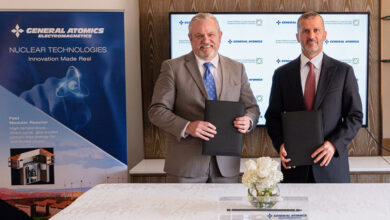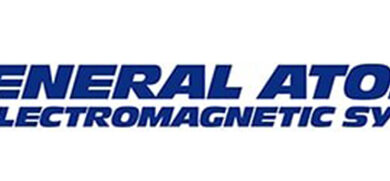Global Nuclear Regulatory Regimes and Treaties
The Comprehensive Test Ban treaty (CTBT) is a multilateral treaty by which states agree to ban all nuclear explosions in all environments, for military or civilian purposes. It was adopted by the United Nations General Assembly on 10 September 1996[1] but has not entered into force as eight specific states have not ratified the treaty yet.
There are 183 signatories to the CTBT
States that need to take further action for the treaty to enter into force are China, Egypt, India, Iran, Israel, North Korea, Pakistan, United States.
[Prime Minister Nehru of India voiced the heightened international concern in 1954, when he proposed the elimination of all nuclear test explosions worldwide. However, within the context of the Cold War, scepticism about the capability to verify compliance with a comprehensive nuclear test ban treaty posed a major obstacle to any agreement.]The signing of the Partial Test Ban Treaty in 1963 banned nuclear tests in the atmosphere, underwater and in space, but not underground.
Neither France nor China signed the PTBT. However, the treaty was still ratified by the United States after an 80 to 19 vote in the United States Senate.
The CTBT was adopted by the United Nations General Assembly on 10 September 1996. It opened for signature in New York on 24 September 1996 when it was signed by 71 States, including five of the eight then nuclear-capable states.
The CTBT aims to ban all nuclear explosions everywhere – underground and above ground, military or civilian – and thwart the development of new generations of weapons, which is why India considers it ‘discriminatory’.
As of March 2016, 164 states have ratified the CTBT and another 19 states have signed but not ratified it.
It has been 20 years and the CTBT still hasn’t been able to become a global law.
The treaty will enter into force 180 days after the 44 states of Annex 2 of the treaty have ratified it. These “Annex 2 states” are states that participated in the CTBT’s negotiations between 1994 and 1996 and possessed nuclear power reactors or research reactors at that time.
At the end of 2015, eight Annex 2 states had not ratified the treaty: China, Egypt, Iran, Israel and the United States have signed but not ratified the Treaty; India, North Korea and Pakistan have not signed it.
At the invitation of the CTBTO, more than 120 delegations of state signatories, non-signatory sates and observers, heads of international organisations and members of the civil society attended a 20th anniversary event in Vienna on June 13-14 to revive the CTBT from a state of stupor.
Despite two decades of global efforts, the treaty has not been able to come into effect due to its unique ‘entry into force’ clause – all 44 countries listed as “nuclear technology holders†need to sign and ratify the treaty.
Nuclear Non-Proliferation Treaty (NPT)
The Nuclear Non-proliferation Treaty (NPT) was signed in 1968. Under the NPT, non-nuclear weapon states were prohibited from, among other things, possessing, manufacturing or acquiring nuclear weapons or other nuclear explosive devices. All signatories, including nuclear weapon states, were committed to the goal of total nuclear disarmament.
All countries, except India, Israel and Pakistan are NPT signatories.
India, Israel and Pakistan have declined to sign the NPT on grounds that such a treaty is fundamentally discriminatory as it places limitations on states that do not have nuclear weapons while making no efforts to curb weapons development by declared nuclear weapons states.
India will not sign the NPT unless it is recognised as a nuclear weapons state.
Since it signed the civil nuclear cooperation agreement with the United States in 2008, and obtained a waiver from the NSG to conduct nuclear commerce, India has been seeking entry into these four international arrangements against proliferation of all WMDs.
There are four primary global regulatory regimes against weapons of mass destruction (WMDs);
- The Wassenaar Arrangement, on Export Controls for Conventional Arms and Dual-Use Goods and Technologies;
- The Nuclear Suppliers Group (NSG), for the control of nuclear related technology;
- The Australia Group (AG) for control of chemical and biological technology that could be weaponized, and
- The Missile Technology Control Regime (MTCR) for control of rockets and other aerial vehicles capable of delivering weapons of mass destruction.
India is part of one, the MTCR.
China is part of one, the NSG.
Israel and Pakistan are not part of any.
Russia is not part of one, the Australia Group.
The Wassenaar Arrangement (WA):
The Wassenaar Arrangement is the successor to the Cold War-era Coordinating Committee for Multilateral Export Controls (COCOM), and was established on 12 July 1996, in Wassenaar, the Netherlands.
It focuses on transparency of national export control regimes and not granting veto power to individual members over organizational decisions. A Secretariat for administering the agreement is located in Vienna. Like COCOM, it is not a treaty, and therefore is not legally binding.
Every six months, member countries exchange information on deliveries of conventional arms to non-Wassenaar members that fall under eight broad weapons categories: battle tanks, armored combat vehicles (ACVs), large-caliber artillery, military aircraft, military helicopters, warships, missiles or missile systems, and small arms and light weapons.
The Wassenaar Arrangement was established to contribute to regional and international security and stability, by promoting transparency and greater responsibility in transfers of conventional arms and dual-use goods and technologies, thus preventing destabilising accumulations.
Participating States control all items set forth in the List of Dual-Use Goods and Technologies and Munitions List, with the objective of preventing unauthorized transfers or re-transfers of those items.
China is not a member. The US is pushing for India’s entry to the WA.
There are 41 countries now in the Wassenaar Arrangement: Argentina, Australia, Austria, Belgium, Bulgaria, Canada, Croatia, Czech Republic, Denmark, Estonia, Finland, France, Germany, Greece, Hungary, Ireland, Italy, Japan, Latvia, Lithuania, Luxembourg, Malta, Mexico, Netherlands, New Zealand, Norway, Poland, Portugal, Republic of Korea, Romania, Russian Federation, Slovakia, Slovenia, South Africa, Spain, Sweden, Switzerland, Turkey, Ukraine, United Kingdom and United States.
Nuclear Suppliers Group (NSG):
Nuclear Suppliers Group (NSG) is a group of 48 nuclear supplier countries that seek to prevent nuclear proliferation by controlling trade in and export of materials, equipment and technology that can be used to manufacture nuclear weapons.
The NSG was founded in response to the Indian nuclear test in May 1974 and first met in November 1975. There were seven founding NSG participating governments: Canada, West Germany, France, Japan, the Soviet Union, the United Kingdom, and the United States.
In 1976-77, participation was expanded to fifteen with the admittance of Belgium, Czechoslovakia, East Germany, Italy, the Netherlands, Poland, Sweden, and Switzerland.
Germany was reunited in 1990 while Czechoslovakia broke up into the Czech Republic and Slovakia in 1993. Twelve more nations joined up to 1990. Following the collapse of the Soviet Union a number of former republics were given observer status as a stage towards future membership.
China became a participating government in 2004.
The European Commission and the Zangger Committee Chair participate as observers.
The 48 Current Participating Governments (PGs) are: Argentina, Australia, Austria, Belarus, Belgium, Brazil, Bulgaria, Canada, China, Croatia, Cyprus, Czech Republic, Denmark, Estonia, Finland, France, Germany, Greece, Hungary, Iceland, Ireland, Italy, Japan, Kazakhstan, Republic of Korea, Latvia, Lithuania, Luxembourg, Malta, Mexico, Netherlands, New Zealand, Norway, Poland, Portugal, Romania, Russian Federation, Serbia, Slovakia, Slovenia, South Africa, Spain, Sweden, Switzerland, Turkey, Ukraine, United Kingdom and United States.
India has applied to be part of the NSG on May 12, 2016.
Australia Group (AG):
The Australia Group (AG) is an informal forum of countries which, through harmonisation of export controls, seeks to ensure that exports do not contribute to development of chemical or biological weapons. Coordination of national export control measures assists AG participants to fulfil their obligations under the Chemical Weapons Convention and the Biological and Toxin Weapons Convention to the fullest extent possible.
The AG was established in 1985 (after Iraq used chemical weapons in 1984) to help member countries to identify those exports which need to be controlled so as not to contribute to the spread of chemical and biological weapons.
The group, initially consisting of 15 members, held its first meeting in Brussels, Belgium, in September 1989.
With the incorporation of Mexico on August 12, 2013, it now has 42 members, including all Organisation for Economic Co-operation and Development (OECD) members, the European Commission, all 28 member states of the European Union, Ukraine, and Argentina. The name comes from Australia’s initiative to create the group. Australia manages the secretariat.
Members of the AG are: Argentina (1993) Republic of Korea (1996) Australia (1985) Latvia (2004) Austria (1989) Lithuania (2004) Belgium (1985) Luxembourg (1985) Bulgaria (2001) Malta (2004) Canada (1985) Mexico (2013) Croatia (2007) Netherlands (1985) New Zealand (1985) Republic of Cyprus (2000) Norway (1986) Czech Republic (1994) Poland (1994) Denmark (1985) Portugal (1985) Estonia (2004) Romania (1995) European Union (1985) Slovak Republic (1994) Finland (1991) Slovenia (2004) France (1985) Spain (1985) Germany (1985) Sweden (1991) Greece (1985) Switzerland (1987) Hungary (1993) Republic of Turkey (2000) Iceland (1993) Ukraine (2005) Ireland (1985) United Kingdom (1985) Italy (1985) United States (1985) Japan (1985).
Delegations representing the members meet every year in Paris, France.
India has adhered to the Chemical Weapons Convention, but is not part of the AG. Russia and China are also not part of the AG.
Missile Technology Control Regime (MTCR)
Established in April 1987, the MTCR is a voluntary association of 35 countries, with India’s formal inclusion on June 27, 2016. There are four other “unilateral adherents†that follow its rules: Israel, Romania, Slovakia, Macedonia.
The MTCR group aims to slow the spread of missiles and other unmanned delivery technology that could be used for chemical, biological and nuclear attacks. The regime urges members, which include most of the world’s major missile manufacturers, to restrict exports of missiles and related technologies capable of carrying a 500 kg payload at least 300 km, or delivering any type of weapon of mass destruction.
Prospective members must win consensus approval from existing members. United States policy had been that members that are not recognised nuclear-weapon states — including India — must eliminate or forgo ballistic missiles able to deliver a 500 kg payload at least 300 km. The US, however, made an exception in 1998 for Ukraine, permitting it to retain Scud missiles and, in October 2012, South Korea was allowed to keep ballistic missiles with an 800-km range and 500-kg payload that could target all of North Korea.
For India, the US seems to have waived these terms, allowing it retain its missile arsenal.
Members must have national policies governing export of ballistic missiles, cruise missiles, unmanned aerial vehicles, space launch vehicles, drones, remotely piloted vehicles, sounding rockets, and their components. There are two categories of exports: Category I, which are basically exports of complete products and major sub-systems and are meant to be extremely rare — with guidelines instructing members that “there will be strong presumption to deny transfersâ€; and Category II, which includes materials, technologies and components whose transfers can be made more easily, since they generally have civilian applications, even though these too are done with caution.
India hopes its MTCR membership will be one more reason for the US to consider exporting Category 1 UAVs, Reaper and Global Hawk, which have been key to counter-terrorism efforts in Afghanistan, Pakistan, Somalia and Yemen.
These drones have so far been sold to only one country, the UK, though unarmed versions have also been made available to Italy and South Korea. The US has been rethinking rules on exports, aware that competitors in Israel, Russia and China are working on similar products — and India wants to be at the head of the queue when the Reaper and the Global Hawk go on the market.
Does the MTCR actually stop the spread of missile technology?
Yes and no. North Korea, Iran and Pakistan acquired ballistic missile technology from China. But then, China began to feel the pinch of US technology sanctions — and announced, in November 2000, that it would stop exporting ballistic missile technology.
China applied for MTCR membership in 2004, but has been denied entry because of suspicion that some companies in the country are secretly supplying technology to North Korea.
MTCR pressure forced countries like Argentina to abandon its Condor II ballistic missile programme (on which it was working with Egypt and Iraq) to join the regime. Brazil, South Africa, South Korea and Taiwan shelved or eliminated missile or space launch vehicle programmes. Poland and the Czech Republic destroyed their ballistic missiles.
It is possible that China may now seek a bargain, to be given entry to the MTCR in return for letting India get into the NSG, where it wields a veto.
The MTCR was initiated by like-minded countries to address the increasing proliferation of nuclear weapons by addressing the most destabilizing delivery system for such weapons. In 1992, the MTCR’s original focus on missiles for nuclear weapons delivery was extended to a focus on the proliferation of missiles for the delivery of all types of weapons of mass destruction (WMD), i.e., nuclear, chemical and biological weapons.
The 34 other countries that are members (Partners) of the MTCR are: Argentina (1993); Australia (1990); Austria (1991); Belgium (1990); Brazil (1995); Bulgaria (2004); Canada (1987); Czech Republic (1998); Denmark (1990); Finland (1991); France (1987); Germany (1987); Greece 1992); Hungary (1993); Iceland (1993); Ireland (1992); Italy (1987); Japan (1987); Luxemburg (1990); Netherlands (1990); New Zealand (1991); Norway (1990); Poland (1998); Portugal (1992); Republic of Korea (2001); Russian Federation (1995); South Africa (1995); Spain (1990); Sweden (1991); Switzerland (1992); Turkey (1997); Ukraine (1998); United Kingdom (1987); United States of America (1987). (The date in brackets represents the initial year of membership.)India has joined the MTCR as the 35th member/partner country. (June 27, 2016).





